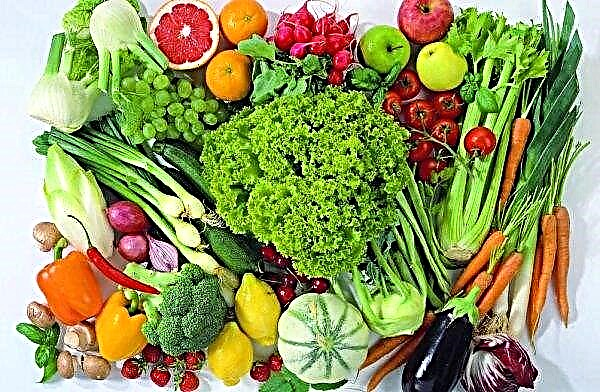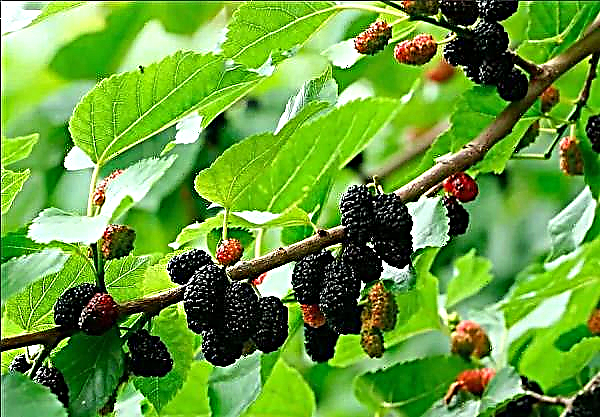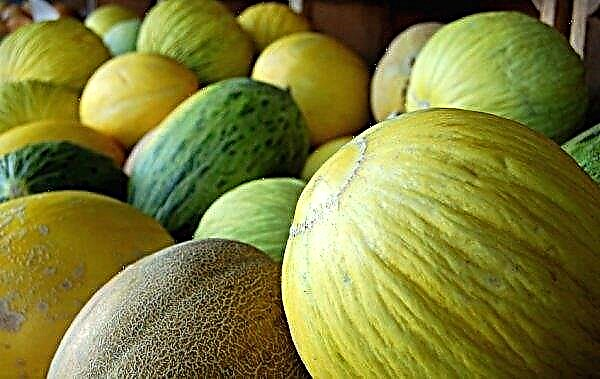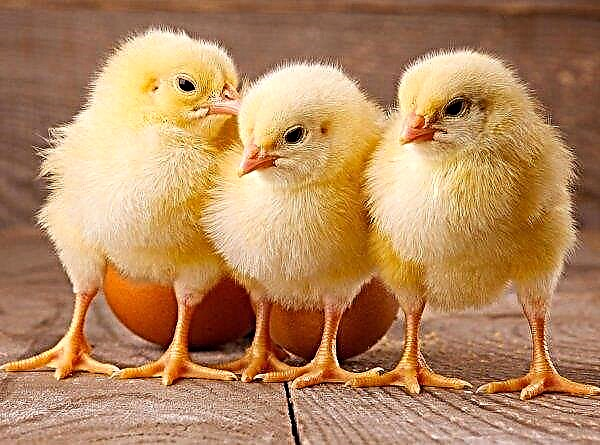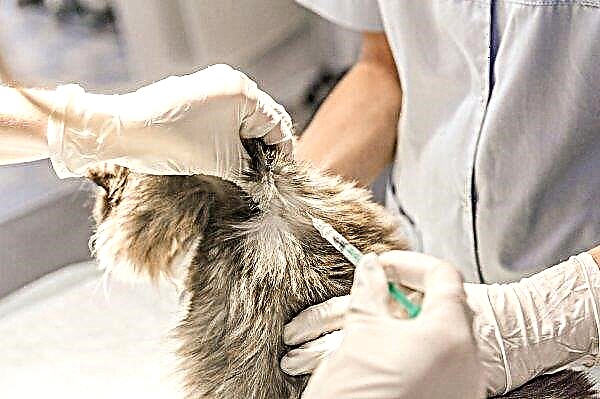The world knows many useful and valuable vegetables for the body, one of which is traditionally considered to be cabbage. Today there are a large number of varieties of this culture, they are successfully grown in various regions, including the Urals. However, not every Ural gardener knows when the time is right for harvesting heads of beds. This article discusses how to determine the maturity of cabbage, and also describes the optimal timing for the collection of this vegetable.
How to identify signs of maturity
It is quite simple to determine the maturity of cabbage: for this, the so-called mathematical method is used in conjunction with the external signs of maturity. The mathematical method is based on the metabolic characteristics of each individual hybrid. Based on this, cabbage is divided into early, mid-season (ordinary) and late.
Early ripenes 80-100 days after planting, mid-ripening will require about 110-140 days for this, late ripening on average not less than 155 days. Such systematization allows us to determine the exact periods after which the harvest of a particular variety becomes fully suitable for harvesting.
Did you know? According to the results of various archaeological excavations, people used for food cabbage back in the stone age.
However, this method does not always make it possible to establish exact time intervals for harvesting, and for this it is necessary to take into account the external signs of ripeness of heads of cabbage:
- the size - as soon as the heads of cabbage have reached the average statistical size specified in the variety description, they must be removed immediately;
- consistency - ripe heads of cabbage always with a hard core, fairly dense;
- leaf color - yellowing of the lower leaves always indicates maturity;
- mass buildup activity - the decline in the growth of the mass of cabbage indicates the onset of a favorable period for its collection.
Dates of harvesting cabbage from a garden in the Urals
Despite the fact that the Urals is considered a fairly complex climatic zone, cabbage in these parts grows without any problems. The culture is quite resistant to sudden changes in temperature, and is also able to withstand short-term frosts. At the same time, a timely harvest is considered the key to a successful and rich harvest, since often overripe heads of cabbage lose not only their useful qualities, but also their nutritional value.
White-headed
White cabbage in Ural dachas is harvested approximately 4–4.5 months after transplanting seedlings into open soil. As a rule, a favorable period for this begins in the second half of September - early October. At this time, night frosts to –5 ° С are quite often observed, but this does not negatively affect the heads of cabbage. Often, short aging of the crop at low temperatures even improves its palatability, as well as enhances shelf life.
Did you know? Sauerkraut is considered more healthy than fresh. In addition, in this form, it is able to maintain its properties and aroma for 1 year.
Red-headed
This type of vegetable, depending on the timing of planting and early maturity, is collected in the summer or late autumn. By the time of complete ripening, the vegetable acquires a characteristic rich color and density. With early planting, harvesting begins in early July, with late planting in the first half of November, however, these criteria apply only when growing a crop in a greenhouse. Plants cultivated in open soil yield crops from the second half of September to the beginning of October, while mid-October is considered the extreme period for heading out.

Broccoli
Harvesting broccoli often begins as early as 3 months after transplanting seedlings in open soil. Heads are cut 2 times: first, the main head of cabbage is harvested, and then lateral inflorescences are trimmed. When planting seedlings in early June, cabbage becomes ripe by the first half of September. However, due to the heat-loving nature, broccoli in the Urals are grown exclusively in heated greenhouses - only in this case the plant is able to give a quality crop.
Beijing
Peking cabbage is harvested selectively, after the heads of cabbage reach a mass of 500–1000 g. Due to the early maturity of the variety, the crop is harvested from early summer to autumn. In the summer, from mid-June to the end of July, if the heads of cabbage have not yet formed, you can cut off not the entire plant, but individual leaves. They are unsuitable for long-term storage, so they are used for fresh consumption. Full-fledged heads of cabbage ripen in September, they can be stored for up to 3 months, so they are often harvested for the winter.
Important! Beijing cabbage does not tolerate frosts, so you need to cut it off before the average daily temperature drops below 0 ... + 5 ° C.
Brussels
Harvesting of Brussels sprouts begins after the tips of the heads have a characteristic glossy sheen, and yellowness appears on the lower leaves. Most often, this type of cabbage is removed from the beds during the second half of September - early October. However, if the head of cabbage did not have time to ripen during the summer, they are left to ripen in the bushes until mid-November. In this case, the heads are able to safely withstand short-term frosts up to –10 ° C.
Savoy
Savoy cabbage is considered one of the most frost-resistant species of this crop, so in the Urals it is often harvested in October-November. At the same time, the general agricultural technique of cultivating the variety allows harvesting at a later time. The vegetable is able to withstand frosts of –8 ° С - this not only does not harm it, but also helps to improve the taste and aromatic qualities. Therefore, quite often, heads of cabbage are left in the beds even after snowfalls and cut off only as necessary.
Colored, kohlrabi
Kohlrabi and cauliflower are harvested selectively, as the fruits grow. Most often, the crop ripens by mid-summer, after which it continues to be cut until the end of August. Cauliflower is harvested after its inflorescences grow in diameter of about 10-12 cm, and kohlrabi - as soon as the heads reach a diameter of 7 cm. After the onset of frost, the harvest of these species cannot be harvested - such a cabbage becomes unusable because it loses its taste .
How to collect cabbage
Harvesting is considered a rather time-consuming process, therefore, approach it with all responsibility. It is best to head out with a knife and a shovel. In addition, wooden or plastic boxes will also be required for harvesting - they not only simplify harvesting, but also help protect cabbages from contact with the soil, which almost always has a detrimental effect on their keeping quality.
To harvest vegetables properly, you must:
- Cut off the head with a sharp knife, while leaving several stem leaves and a stalk about 3-5 cm.
- Put the cut crop in boxes or on wooden boards and dry in the sun (or in a warm room) for several hours.
- Dried heads of cabbage to clear of putrefactive lesions and wilted parts, and then sorted. Whole cabbage can be sent for long-term storage, and damaged cabbage should be consumed within a few weeks.

Important! 2 weeks before the expected date of harvest, you must stop watering the beds. Otherwise, this will lead to the creation of favorable conditions for the defeat of vegetables by fungi.
Harvest Storage Rules
With proper storage, the cabbage crop is able to maintain its aromatic and taste qualities for 8 months. However, this will require special conditions. Store the vegetable at a temperature of 0 to + 2 ° C and at an air humidity of about 85–90%. Most often, such conditions are observed in the basement or in a special vegetable store, but a simple household refrigerator can also create them.
You need to store heads in wooden or plastic boxes, or on specially equipped shelves in one layer. This protects the heads from stagnation of air, which can cause rapid rotting of the crop. Also, to prevent stagnation, the storage location of the vegetable 1-2 times a month is well ventilated.
During storage, heads of cabbage must be sorted and cleaned. As a rule, the procedure is carried out at least 1 time per month, but it is best to do this every week. Over time, the outer leaves of the heads can fade and rot, so timely cleaning keeps the heads fresh throughout the winter.
Is cabbage afraid of frost?
Cabbage is considered one of the most frost-resistant vegetable crops. Depending on the type and variety, it is able to withstand short-term frosts within –5 ...– 10 ° С. Of course, this property is not inherent in all varieties. White cooling, red-headed, Savoy and Brussels sprouts can withstand cooling. At the same time, colored, broccoli, Peking and kohlrabi need to be removed before it gets colder to +5 ... + 10 ° С.
Although cabbage is considered an unpretentious culture, it requires special attention. To get a quality crop in the Trans-Urals region, you need to not only properly grow this vegetable, but also to pick it in time. The quality of heads of cabbage, as well as their steadiness, depends on this, which directly affects the commodity value of the entire crop.




